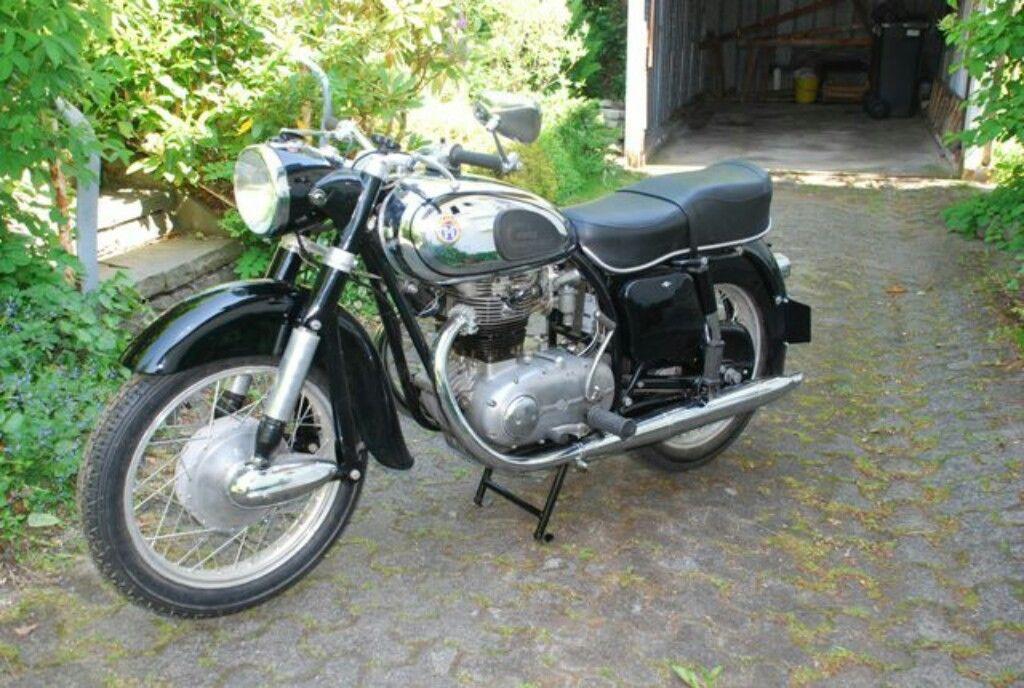Horex, as it existed from 1928 to 1956, was a company that built motorcycles of absolute top quality. Apart from the quality of Horex, that undeniable quality, Horex was still the brand of the just too late or wrong decisions. And that is and remains a pity. The Horex Imperator (1954-1958) …
Throughout the 250s and 1000s, engines continued to get better and more sophisticated. Until the Second World War, Horex produced engines between 1953 cc and 1955 cc. Horex was one of the few German motorcycle manufacturers to come out of World War II almost without bombing damage. Thanks to good relations with the Americans, Horex was the first German company to produce motorcycles again after the war. The rapid growth continued until it became a crisis in the motorcycle industry. From 250, the bourgeoisie preferred a car. Sales numbers fell despite the engine improvements that were made to the Regina models. In 350, the Resident saw the light of day. This was a completely newly developed single-cylinder four-stroke machine, which was made in a XNUMX and XNUMX cc version.
A year later, in 1956, the Horex Imperator was released, a 400 cc two-cylinder four-stroke with 30 hp, the absolute 'top of the bill'. The machines were made from 1954 to 1956, some sources report as early as '58.
First 500 cc
The 400 cc Horex Imperator was already preceded by a small series of 500 cc Horex Imperators from 1950-1951. “The old Imperator was too heavy,” said Ob. Ing. Rudolph Gunkel. He was commissioned to create a Horex Imperator 2.0. The newcomer weighed the same as its predecessor. But it had become less heavy: 400 instead of 500 cc. The 409 cc engine produced 26 hp. The new Horex Imperator had a telescopic front fork and rear swingarm suspension. And furthermore, for cost reasons, there was heavy reliance on the construction kit concept: the interchangeability of parts between the various models (the Reginas).
Such a Horex Imperator was in its time a machine that sanded at the bottom of the heavy market segment. It was an expensive, fast, dynamic touring motorcycle.
But what was much more important: the Horex Imperators are the grandfathers of all Japanese multi-cylinders with a camshaft driven from the center of the crankshaft. Honda was the first to achieve success with that patent (Patentschrift No. 893 875, Deutsches Patentamt).
In the aftermath as Zündapp
Zündapp was no longer able to supply heavy engines to the United States after the production of the Grüne Elefanten was stopped. The Zündapp importer Berliner quickly needed a 'heavy, fast' machine in its range again. The Horex Imperator, enlarged to 450 cc, received a mild makeover and was shipped to the United States with a higher handlebar as the Zündapp Citation. However, the Americans quickly found out that the new Zündapps were just Horexes. And the company that is the official Horex representative in the United States was also not happy with the development.
But the genes have been passed on
The great thing is that Horex's 'Advance in quality and technology' has not been without consequences. Because Horex inspired the Japanese brand Hosk. And that engine was again – via Showa – a source of inspiration for the men from Yamaha who – in addition to their experience in building the six-cylinder engine block for 'James Bond's Datsun 2000 GT – also benefited from Horex's genius. And so Yamaha's 'Daurerrenner', the XS650 series, is a distant relative of the Horex Imperator.













That Bond car was a Toyota 2000GT.
Horex Imperator 392 cc
2 cylinder four-stroke engine with overhead camshaft, Lux for that time
With 1 carburetor about 25 hp at 5800 rpm
2 carburettors about 27 hp at 6500 rpm
Was 6 volt alternator but ours is 12 volt with alternator of the 2 CV, Duck.
Custom made for the block
Nowhere is it stated whether it is a two or four stroke. You can only deduce it from a mention of a camshaft drive.
Since 1971 I own a 1955 Imperator
Bought in parts and built after engines from Japan. With 12 volt alternator, built-in and flashing lights and large halogen headlight.
Can still participate in traffic well
Nice engine!
fancy thing (Y)
Well done!
I always understood that the Horex/Zündapps had to be destroyed by order of the US importer, and that Münch managed to save a few blocks (450cc) and wanted to make a new start with the brand name after the demise of Horex…
But I could be wrong...
Beautiful!